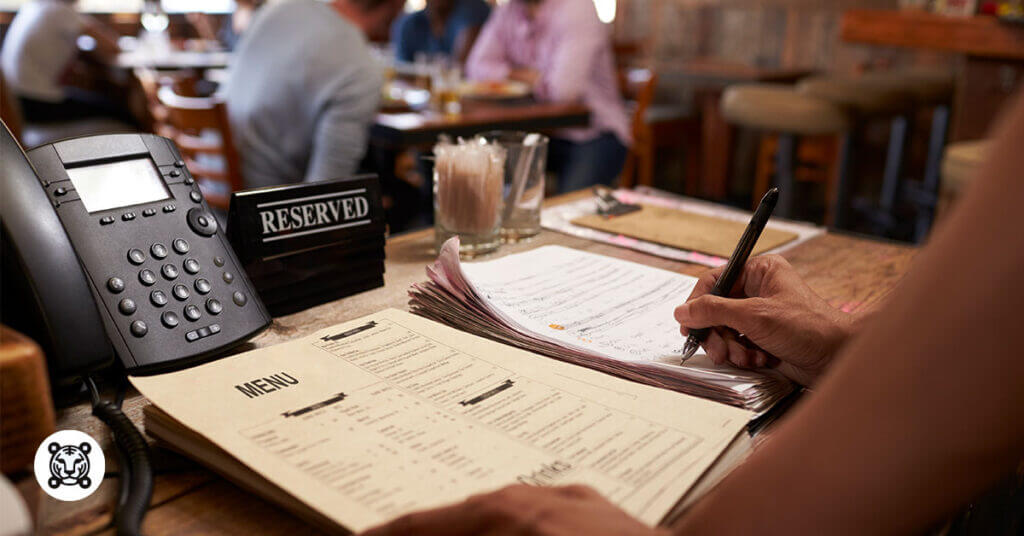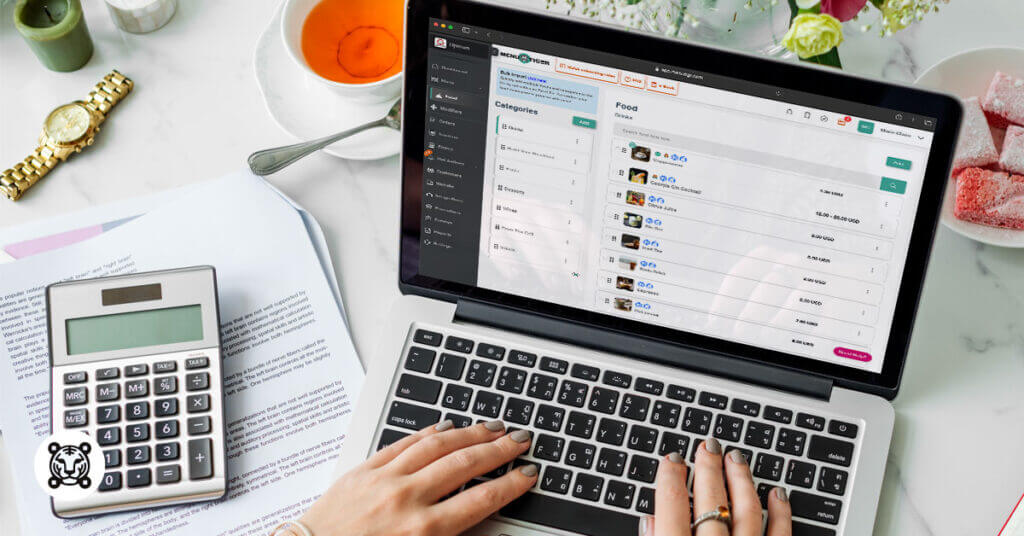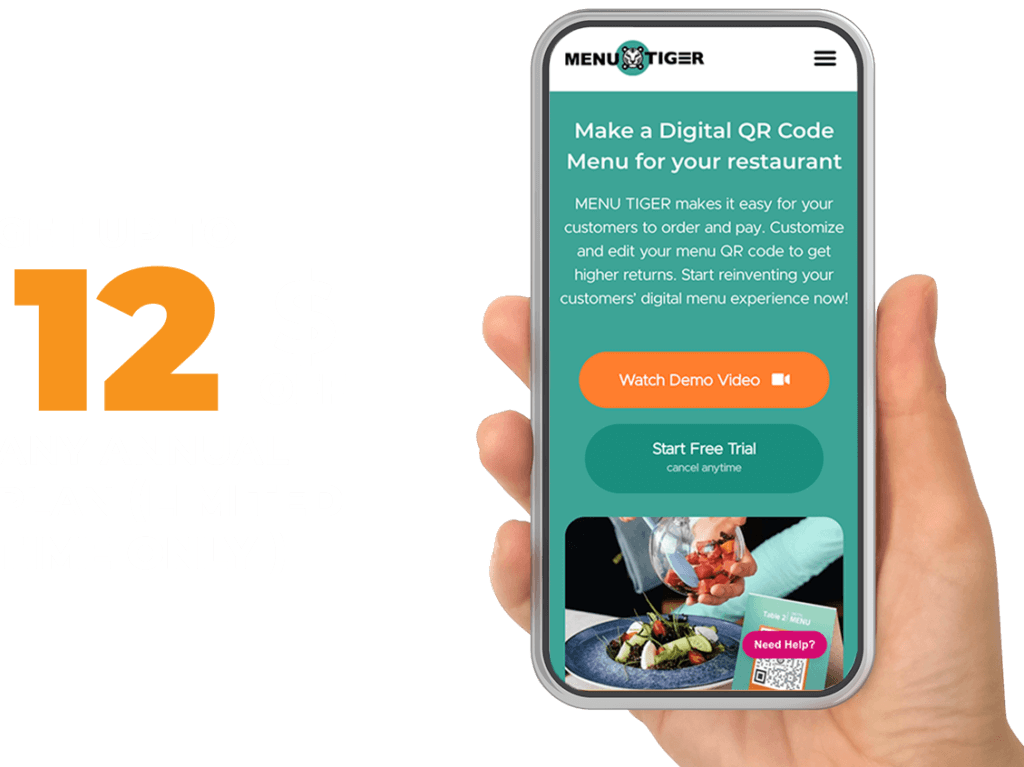If you’re wondering how you’ll make your food items profitable, using a restaurant menu pricing strategy will be a critical step for you.
There are various pricing strategies, such as cost-plus, dynamic, bundle, and competitive pricing. You can combine these or choose one that best fits your restaurant.
It is also essential to know how you will implement these strategies effectively to boost your sales and revenue.
You will first need to have a cost analysis, followed by market research, and then regular monitoring using an interactive menu software.
In this article, you’ll get to know more about the different menu pricing strategies and some tips on how to implement them in your business.
Table of Contents
ToggleWhat is a pricing strategy: A rundown
A pricing strategy is a set of principles, approaches, and methods that a business uses to determine the prices of its products or services.
It also involves deciding how much to charge your customers for the quality of dishes or service they received. This means that you can also create the best menus to keep food costs down which allows you a good spot ahead of your competitors.
Adopting this strategy can shape your restaurant’s competitive position, profitability, and overall market success.
Menu pricing example formula: Determining how much to charge your customers for a dish
Take note that businesses use various pricing formulas and methods to determine menu prices that respond to their needs.
However, one common approach is cost-plus pricing, where a fixed percentage is added to the cost. Here’s the basic formula for it:
| Menu Price = (Cost of Ingredients + Labor Cost + Overhead Cost) x (1 + Desired Profit Margin/100) |
Let’s break down each component:
- Cost of Ingredients
This is the total cost of each item used for your dish (e.g., oil, condiments, garnishes, etc.).
- Labor Cost
This involves the wages of chefs, cooks, and other staff preparing and serving the food.
- Overhead Cost
Overhead costs cover indirect expenses related to running the kitchen and the restaurant. This may include rent, utilities, equipment, and other operational costs.
- Desired Profit Margin (DPM)
This is typically a percentage markup on the total cost and is the profit you aim to make from selling each menu item.
Note: Decide on the profit margin you want to achieve for each dish (the average restaurant profit margin in a full-service restaurant is 3-5%).
For example, you want to set the selling price for a classic pasta dish. You’ll need to:
Determine the total cost of your dish
To calculate the total cost of the classic pasta, you’ll need to get the total amount of the ingredients used, the labor cost, and the overhead cost. Here’s the formula:
| Total Cost = Cost of Ingredients + Labor Cost + Overhead Cost |
So, let’s say the cost of the ingredients is $10.00, the labor cost is $8.00, and the overhead cost is $5.00. In total, the price would be $23.00.
| Total Cost = $10.00 + $8.00 + $ 5.00 Total Cost= $23.00 |
Calculate your desired profit margin
Calculating your DPM determines how profitable and effective your restaurant pricing strategy is and how well you measure and use ingredients, labor, and other resources to make the dish.
To know your DPM, use this formula:
| DPM = Profit Margin x Total Cost |
You may decide on your profit margin (PM), but the average gross profit margin (GPM) in the restaurant industry, based on 41 U.S. companies, is between 20%-30%.
To calculate your DPM, let’s presume that your restaurant’s PM is 30%. And let’s use the $23.00 Total Cost from the previous example. Here’s the calculation:
| DPM = 30% x $23.00 DPM= 6.9% |
Determine your menu price
Now, this is where you’ll know how much to charge your customers for any dish. Here’s the menu pricing formula:
| Menu Price = (Total Cost) x [ 1 + (Desired Profit Margin/100)] |
We’re going to stick to our pasta dish example. Remember that our total cost is $23.00, and our DPM is 6.9%. Following the formula above, here’s the computation:
| Menu Price =( $23.00) x [ 1 +(6.9/100)] = ($23.00) ( 1 + 0.069) = ($23.00) ( 1. 069) Menu Price = $38.87 |
Round this figure up to a more customer-friendly price of $39.00 or $38.99.
A quick guide on how to price a menu: 7 strategies to consider

Menu engineering
Transform your menu into a strategic roadmap that guides your customers toward high-profit dishes by leveraging menu engineering principles.
This technique is one of the most effective food pricing strategies, as it creates a visually appealing and strategically structured menu that boosts profitability.
Check these suggested tips:
- Guide your customers’ attention to your high-profit dishes. People tend to draw their focus toward the middle page of your menu, followed by the top right corner and then to the left. You can place them in these positions.
- Use callouts, boxes, or expanded descriptions to highlight your signature menu item.
- Categorize your offerings into logical sections such as appetizers, beverages, desserts, etc. Keep it as simple as possible.
- Add high-resolution images, descriptions, or videos to entice customers. It would be further emphasized if you use a QR code menu, where customers can access your food items virtually.
- Offer seasonal and limited-time offers to improve your restaurant’s foot traffic, increasing sales and revenue.
Cost-plus pricing approach
Using this strategy gives you a clear understanding of your expenses and ensures a baseline profit for each of your menu items.
This approach includes the following:
- Calculating the total cost of producing a dish
- Including ingredients, labor, and overhead expenses
- Adding a predetermined percentage as profit
Competitive restaurant pricing strategy
This strategy deals more with researching and analyzing your competitors’ pricing strategies and learning how to scan a menu from your competitor’s establishment to have a benchmark for your menu prices.
You can set your menu prices to be in line with or slightly below what similar establishments charge.
For instance, if you want to set a competitive price for a cheeseburger compared to other similar restaurants serving the same, here’s what you need to do:
- Consider costing
Assuming the total cost of ingredients, labor, and overhead for the classic cheeseburger is $8.00.
- Conduct competitor pricing analysis
Analyze the prices of cheeseburgers at competing establishments. Competitor B sells a similar food item for $10.00, and competitor C prices theirs at $11.00.
- Decide on your marketing position
Position your item as an attractive and affordable option in the local market to appeal to cost-conscious customers.
After consolidating them, let’s compute your competitive price. To do that, you need to sum up the prices of all your competitors and divide it by the total number of competitors you have.
Here’s the formula:
| Average Competitive Price = (Competitor B’s price + Competitor C’s price)÷2 = ($10.00 + $11.00)÷2 = $21.00÷2 Average Competitive Price =$10.5 |
You can then decide to set the price of your cheeseburger slightly below the average competitor price to attract price-sensitive customers. You can go for $9.50 or $10.
But you need to tread carefully on your pricing to avoid undervaluing your offerings, as this may impact their perceived quality.
Value-based pricing
Elevate your pricing strategy by focusing on the perceived value of your dishes.
You need to consider the uniqueness of your ingredients, your meticulous presentation, and the overall ambiance of the dining experience, reflecting your restaurant branding strategy.
By aligning your prices with the value your customers would place on the culinary journey you offer, you can justify premium pricing for exceptional items.
Psychology in pricing a menu
Psychology provides a significant benefit when it comes to menu pricing.
It influences your customers’ perceptions and decisions when choosing the array of dishes you offer.
Leverage psychological pricing techniques by setting prices below a whole number, for example, $9.99 instead of $10. Ending the price with .99 makes it seem lower than the whole number, making it look affordable.
You can also explore different menu designs, strategically placing menu items where your customer’s attention is naturally drawn.
Upselling strategy through bundle pricing
Create bundled offerings by grouping complementary items at a slightly discounted rate compared to purchasing each item individually.
You can offer your least profitable item paired with any other dish to maximize the sales of your offerings.
This strategy encourages customers to explore additional menu items, ultimately increasing their spending.
Dynamic pricing based on demand
For this strategy, adjust prices dynamically based on factors like demand, time of day, or season.
Introduce happy hour discounts, lunch specials, or seasonal promotions, aligning with customer behavior and maximizing revenue during peak periods.
For example, during the holiday season, you can offer a buy one, take one promotion for your dessert menu on the 12th day of the month.
This kind of offer urges customers to avail of your promo because it’s in a limited time frame, as the demand for desserts during this season is high.
Tips on how to implement the pricing strategy for restaurant menu effectively

Now that you’re geared up with the restaurant menu pricing guide, it’s time for you to explore how to implement these in your business.
Here are a few tips to help you out:
Carry out a cost analysis of your resources
At the core of any well-thought-out pricing strategy is a comprehensive cost analysis.
Your first step is to understand the breakdown of all the costs incurred by your business to operate and produce your offerings.
This includes the cost of ingredients, labor overhead, and other expenses.
Conduct market research
Nothing beats a restaurant that knows exactly to whom it’s selling.
With the help of market research, you’ll be able to understand the demographics and preferences of your target market, which is indispensable in crafting a menu that resonates with your customers.
These data-driven insights will help you align your pricing with your patrons’ expectations and local economic conditions.
Alongside your market research, you must also understand your target customers’ price sensitivity.
Factors such as income level, location, and the type of dining experience your customers seek are helpful for you when deciding your pricing.
Maximize a mix of pricing strategies
Don’t limit yourself to using one specific pricing approach. Explore various strategies that suit your restaurant’s needs.
You can combine multiple pricing strategies to create a dynamic and attractive menu. For example, use cost-plus pricing as a baseline and incorporate value-based pricing for your premium items.
Also, you can experiment with bundle pricing to encourage customers to explore your offerings.
Be transparent about your offerings through a digital menu QR code
Communicate the value of your menu items to your customers.
One effective way to do this is through a digital menu QR code. If you use premium ingredients, you can easily add them to the menu item’s information.
Also, setting up or adding tax rates to menu prices can easily be done on your menu. The highlight is that your customers can access it at their convenience.
All they have to do is to scan it through their devices.
Monitor industry trends
Keep abreast of industry trends and adjust your pricing strategy accordingly.
It will help you stay flexible and encourage you to innovate, especially in response to customer preferences or dynamic market changes.
Regularly review and make adjustments using interactive menu software
You have to remember that menu pricing is not a one-time task–it requires ongoing evaluation.
Regular review of your sales data, customer feedback, and market trends is crucial in assessing the effectiveness of your pricing strategy.
To conduct this rigid monitoring, you need an advanced tool like an interactive menu software to streamline the process.
It will give you a hand in collating feedback and generating monthly sales and revenue reports, making them accessible to you for your decision-making process.
MENU TIGER: Optimize menu pricing using this interactive menu software

The cost of ingredients for your dishes is not the only component to consider in restaurant menu pricing.
Other aspects, such as labor, overhead, and other operational expenses, are included in every food item you offer, which can lead to higher charges to your customers.
But what if there’s a clever way to achieve an optimal menu price without compromising the quality of your dishes?
The answer is MENU TIGER — an all-round digital menu software that streamlines your overall operation.
You read it right. This software offers various features, making it possible for you to come up with customer-friendly prices for your offerings.
Here are some of MENU TIGER’s advantages:
Less staff needed
Its digital menu allows customers to browse offerings, place orders, and pay through their devices. Features like the restaurant waiter call button help reduce the need for additional staff, lowering labor costs.
Plus, it offers a restaurant waiter call button system that works as a built-in beeper to call out your attention once customers trigger it.
There’s no need to wait in line or call for staff to accommodate them. Your customer can comfortably sit at their tables and order.
This way, it can minimize the need for human resources, contributing to a lower labor cost.
Cost-efficient
Unlike printed menus, a digital menu is inexpensive to update. Menu changes, price adjustments, or new items can be implemented instantly, ensuring accuracy without the extra printing budget.
Displaying a well-designed menu doesn’t just end there. In the long run, you’ll need to update its prices and availability and curate it based on popular demand to cater to your customers.
With paper menus, it will cost you a different budget to make, design, and produce a whole different set of menus to use in your diner.
With a menu QR code, all you have to do is keep your software subscription active, and you can already update your offerings with ease.
Customizable menu
Because it offers a wide range of customization tools, you can edit, design, and update it anytime, making it cost-efficient.
If you introduce new dishes or change the prices, you don’t need to pay for printing and designing your menu. You can already do it in real-time.
It’s one of the cost-saving tricks that will impact your QR code menu price range.
Minimize order errors
Errors in taking orders contribute to loss of revenue. Imagine a dish becomes food waste because of a mistake in handling and preparing what the customer ordered.
You can avoid this undesirable situation using a digital tool in your restaurant.
With one scan of your paperless menu QR code, customers can view your menu offerings, personalize their orders accurately, and review them before placing their orders.

Restaurant menu pricing guide: The key to a profitable business
It takes in-depth research and analysis when you do restaurant menu pricing.
It’s not a one-time assignment you need to accomplish within a day but a long process that involves various methods and approaches to come up with a selling price that is within your customers’ budget while keeping your offerings profitable.
This is where technology like the MENU TIGER system, an interactive menu software, can help. With its various features that streamline your overall operations, you’ll be able to cut down on your costs but still maintain the quality of your offerings.
FAQs
It refers to various strategies and approaches that restaurants use to determine the prices of items on their menus.
Choosing an appropriate pricing method is crucial for a restaurant’s financial success and customer satisfaction.
Cost-plus pricing is the most common method of pricing menu items. This straightforward approach involves calculating the total cost of producing a dish, including ingredients, labor, and overhead, and then adding a desired profit margin.





